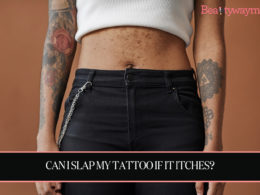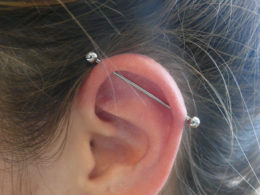Table of Contents Show
Can light spots on the skin go away? Light spots on the skin can be caused by varieties of conditions and in most cases, you would notice it darken in a few weeks but if you have some skin rashes that linger for a year or longer then the light spots are unlikely to disappear anytime soon too. Light spots on the skin are commonly known as white spots as well.
Light spots can be an indication of a skin condition that might be caused by a lack of melanin in the skin. You must understand your skin type to protect it from germs, you also need to understand how it reacts to certain products.
The people mostly affected by this light spot on the skin are dark skin, but this does not mean light skin tones are not prone to it as well, it is just more noticeable with darker skin. There are different kinds of spots that can be found on the skin, and light spots are quite common.
So what can you do about light spots on the skin? While discoloration is common, and you can easily fix them at home, the same can’t be said for light spots. Read on to learn about light spots, possible causes, and how to get rid of them.
Light Spots On Skin: What it Means?
Light spots on the skin are the same as white spots on the skin, and they occur when skin proteins or dead cells get trapped under the skin’s surface. These white spots on the skin are not usually a source of concern as they can occur as a result of depigmentation or loss of color. Deficiency can cause light spots on your skin as well.
You have to first take note of the size of the spot on your skin when it appeared, and if it is accompanied by any other symptoms like dry skin, itching, and peeling. You should book an appointment with your dermatologists to properly identify and provide treatment.
Treating light spots on the skin is tricky as this means you need to understand the cause to take care of it. Light spots on the skin are not contagious and some are known to clear on their own depending on the cause.
Also, in some cases, these white spots can be an alarming sign that you need to seek medical attention while some might not need any specific treatment. Regardless, make it a point to visit your doctor if these light spots are discovered to treat them properly.
Causes of Light Spots on Skin And How to Get Rid of Them
You have to note that light spots can affect anyone, it could be a sign that you have a skin condition or simply a reaction to something that will go away in no time. While hyperpigmentation is a common skin condition with many treatments available, the same can’t be said for light spots on the skin. However, here are some of the possible causes and ways to get rid of them.
1. Overexposure to The Sun
It is common to get light spots after exposing your skin to the sun all day at the beach or pool but luckily, spots from excessive exposure to the sun should clear up a few days later. Skin can also peel a few days after exposing it to the sun but in most cases, it does not come with any other symptoms from the light spots.
Light spots from sun exposure are usually very noticeable, and they can cover a significant part of the body that got the most sun exposure. Below are treatment options for light spots caused by exposure to the sun.
- Moisturize your skin daily and ensure to use sunscreen before going out into the sun
- Avoid spending too long in the sun
- You should ideally moisturize your skin thoroughly for 10 days before going into the sun especially if you have a sensitive skin
- Use topical retinoid creams such as retinol and tretinoin
- Consume foods of vitamin A such as tomatoes, carrots, papaya, mangoes, and boiled egg, they can prevent sunburn
- Avoid artificial tanning beds.
2. Vitiligo
Vitiligo is a disease that can cause white spots on the skin, it is an autoimmune disorder that can cause the appearance of this light white patches on your skin and inside your mouth or anywhere on the body.
The cause of vitiligo isn’t fully understood, but it is believed to be a result of genetic mutation.
These skin diseases are treated using a process called phototherapy and medications are given as well. To get rid of light spots caused by vitiligo, a skin graft can be used to cover the area with the white patch and also ultraviolet light treatment with topical medications.

3. Mycosis
Mycosis is a fungal infection and happens to be one of the most common causes of light patches on the skin. This fungal infection is commonly known as pityriasis versicolor or tinea versicolor and as the white patches become more pronounced when skin becomes tan from exposure to the sun, it is called beach mycosis.
Several factors can lead to mycosis, some of which include excessive sweating, a weakened immune system, oily skin, and humid weather. This is treatable and not contagious.
- Use cream-based moisturizers throughout the day
- Apply antifungal ointment as prescribed by your dermatologist
- Anti-fungal shampoo washes, soaps, and creams are often the first method of treatment or indicated to supplement treatment
- Avoid scented soaps
- There is no way to prevent pityriasis alba but can be lessened with a proper skincare routine.
4. Eczema
Eczema which is also known as atopic dermatitis is an inflammation of the skin, and it is a chronic disease that can appear at any age. Atopic dermatitis can appear anywhere on the body and its common symptoms are itchy dry, inflamed, irritated, rough flaky skin.
Also, it causes red patches, bumps, or lumps and when this disappears, a light spot is left in its place. Here is what to do when light spots are the result of eczema.
- Visit your dermatologists for diagnosis and treatment.
- Treatment of eczema usually involves a steroid medication prescribed to be used twice a day
- An antihistamine may be recommended for the itching
- The skin should also be kept hydrated.
5. Hypomelanosis
The exact cause of hypomelanosis is unknown, but it is a skin condition that causes some parts of the body to appear lighter than the overall skin.
Hypomelanosis is mostly seen in people with allergies and can become better after exposure to the sun, and it is often common in people and there is no specific treatment for it.
You simply have to expose your skin to the early morning and late evening sun to even out your skin tone.
Tips to Fix Light Spots on Your Skin
Anyone can develop light spots on their skin, but they are more pronounced on dark and brown skin types. But not to worry, here are tips on how to take care of your skin and fix light spots on your skin.
- Wear sunscreen every day covering all areas that can get exposed to the sun
- Pay close attention to your skin and watch out for any new light spots, darkening of the light spots, or any change at all. See a dermatologist if there is no change, or it worsens after a few weeks
- Avoid spending too long in the sun
- Keep your skin well moisturized and hydrated
- Stay out of artificial tanning beds
- Keep your hands away from the light spots
- Simplify your skincare routine
- Lastly, check your skin regularly.
Frequently Asked Questions
Can light spots be a sign of cancer?
No, light spots on the skin are rarely a sign of cancer but rather they are often associated with a condition called vitiligo. Light spots on the skin are not a life-threatening condition that primarily affects cosmetic views, although there are some claims that they are early warning signs of cancer however it is best to have them checked out immediately.
Do white sun spots go away?
White sunspots are the result of excessive exposure to the sun hence they tend to thrive in hot humid climates. It might be more visible to others due to skin color, and it might take a while to go away.
Can light spots go away?
Yes, light spots should go away in no time as soon as the rashes causing them are treated provided they are not caused by any underlying conditions. However, when the rashes or conditions linger for a year or longer the light spots can take longer to heal as well.
Wrapping Up
Light spots are likely to occur when skin protein gets trapped under the skin surface, so they can be caused by different conditions. Some light spots are harmless but if it does not clear in a few days, or it is accompanied by other symptoms then you really should see your doctor.
Your dermatologist’s priority will be to give you an accurate diagnosis, take a close look at the light areas and then tell you what is recommended.
More from skincare:












